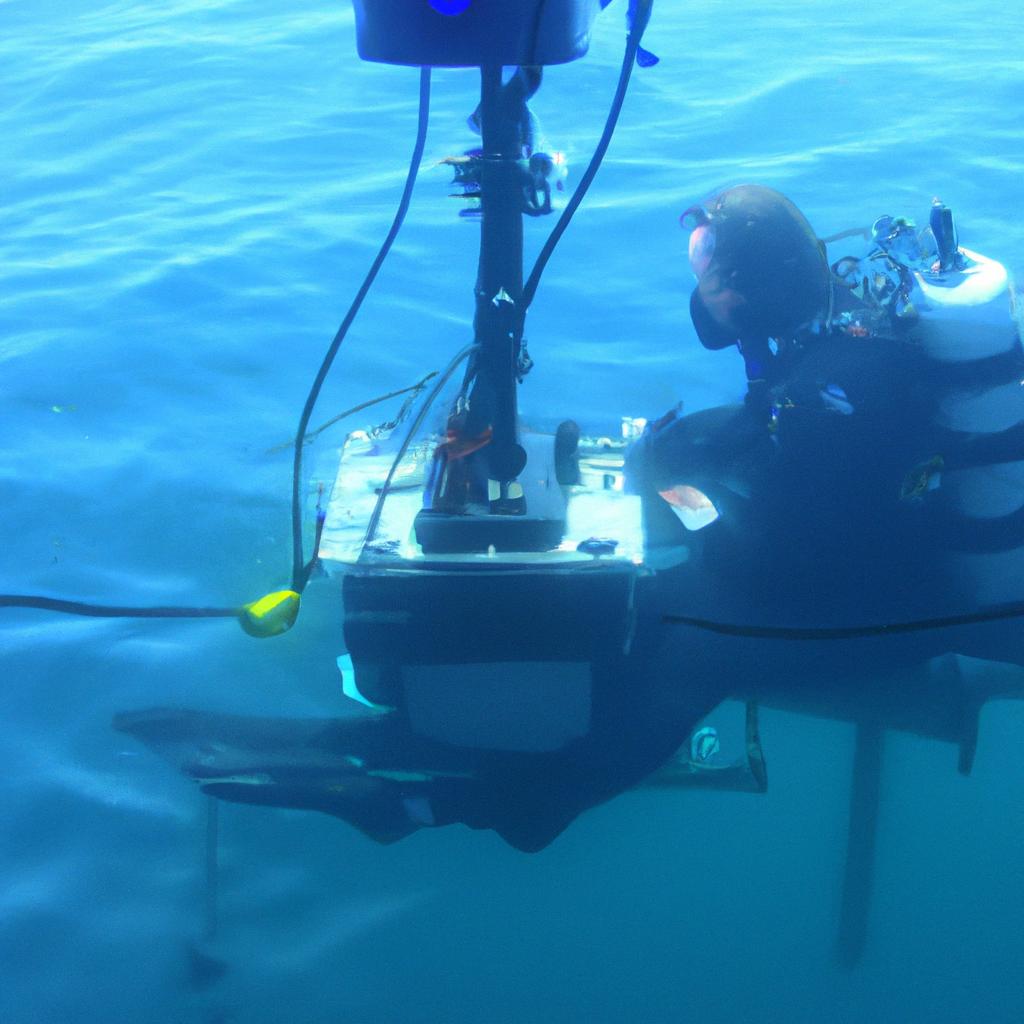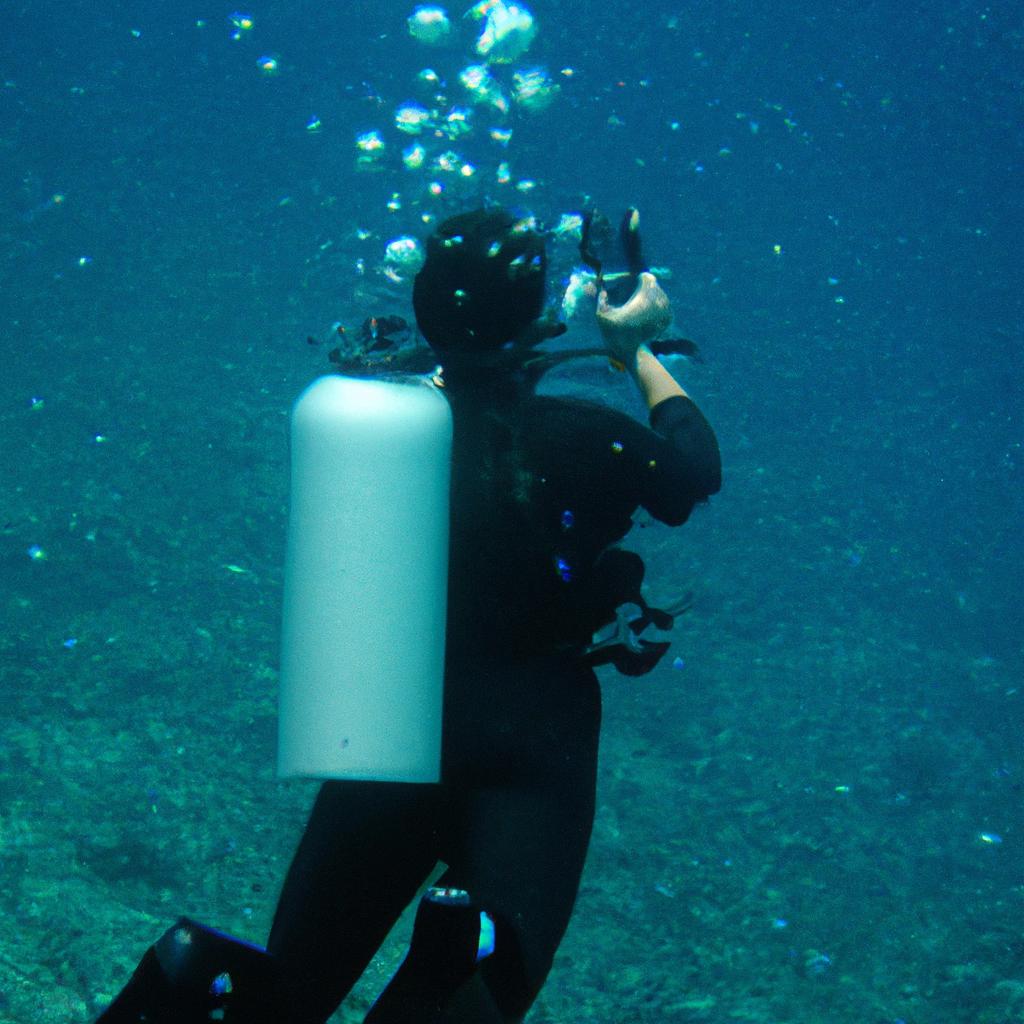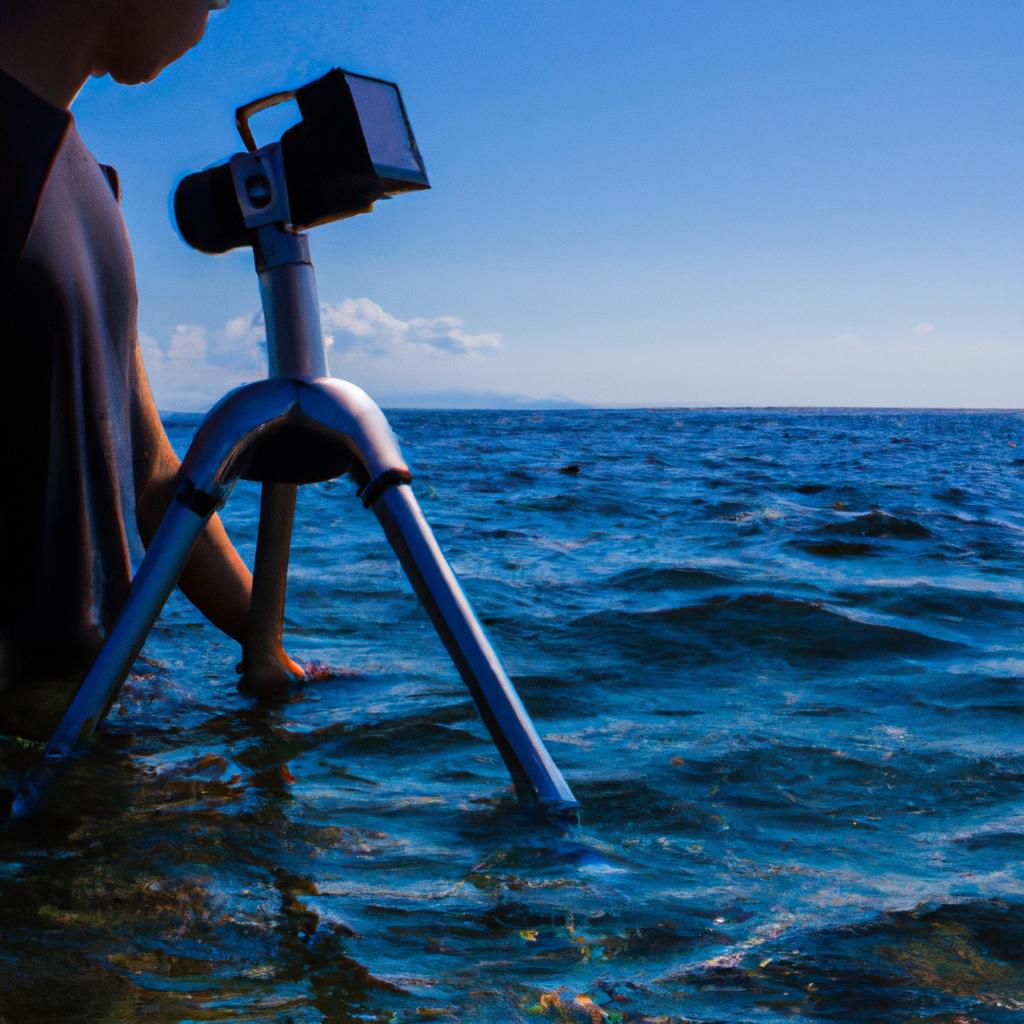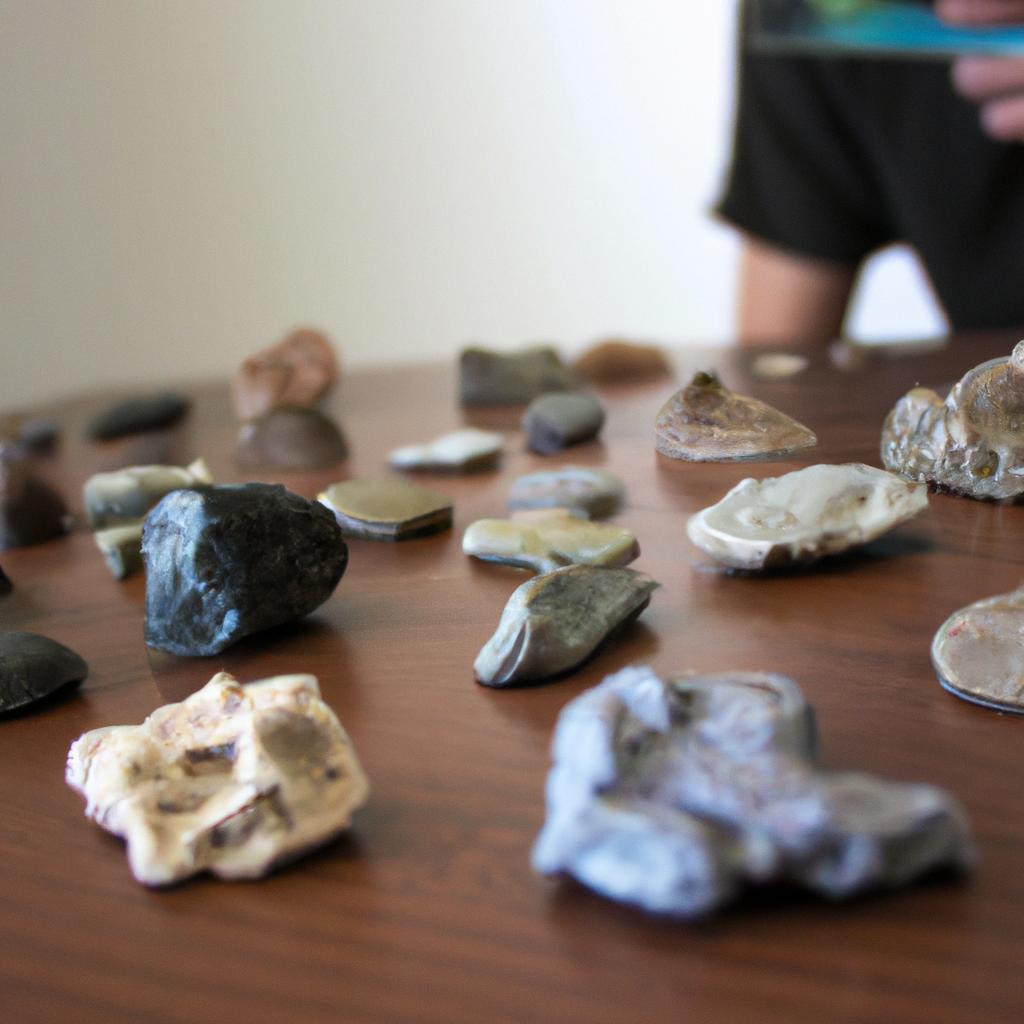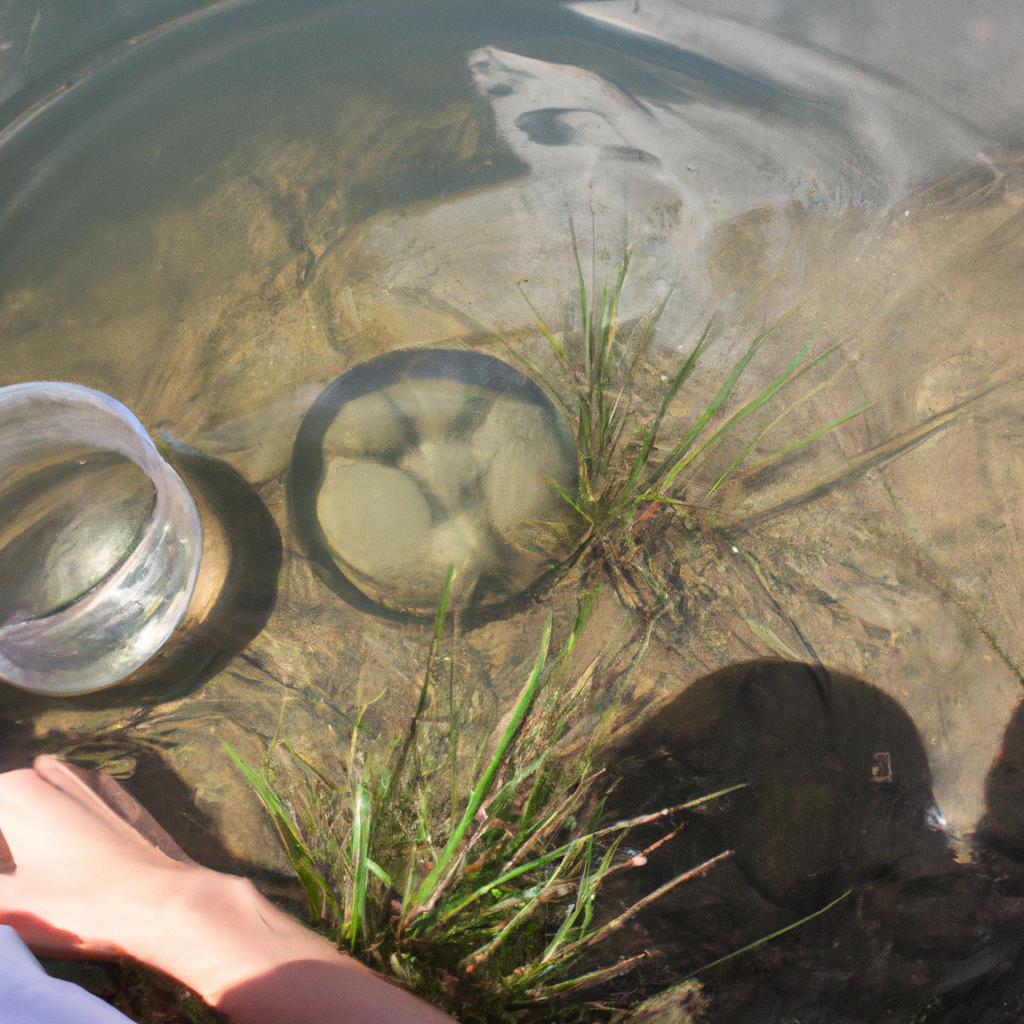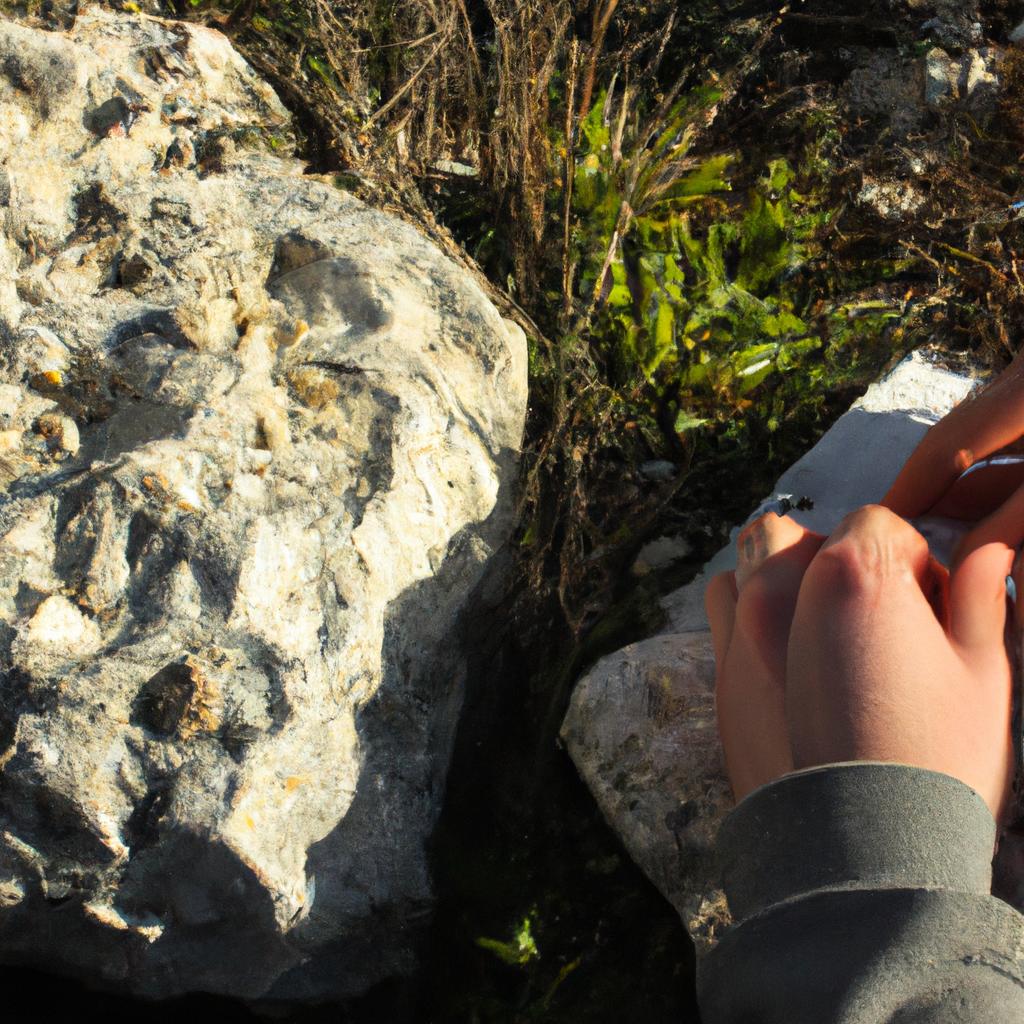Deep sea exploration in earth sciences has long captivated the interest of researchers and scientists alike. The vast expanse of the world’s oceans holds countless mysteries yet to be unraveled, making it a fascinating field of study for oceanographers. One such example that highlights the enigma surrounding deep-sea exploration is the discovery of hydrothermal vents at the bottom of the Pacific Ocean. These geothermal systems, teeming with unique forms of life adapted to extreme conditions, have provided invaluable insights into our understanding of marine ecosystems and their interconnectedness with geological processes.
The quest for knowledge about deep-sea environments involves not only uncovering hidden ecosystems but also delving into geological phenomena that shape them. Through advanced technological advancements, including remotely operated vehicles (ROVs) and submersibles, scientists are able to explore depths previously inaccessible to human observation. This enables them to investigate key aspects such as seafloor topography, sediment composition, plate tectonics, and volcanic activity. By studying these elements within the context of oceanography, researchers can gain a deeper understanding of Earth’s dynamic evolution and its impact on both terrestrial and aquatic realms.
In this article, we will delve into various aspects related to deep-sea exploration in earth sciences. We will explore topics such as the importance of deep-sea exploration for understanding climate change, the discovery of new species and their adaptations to extreme environments, the role of deep-sea ecosystems in carbon cycling, and the potential applications of deep-sea resources.
One significant aspect of deep-sea exploration is its relevance to understanding climate change. The oceans play a crucial role in regulating Earth’s climate by absorbing and storing vast amounts of heat and carbon dioxide. By studying deep-sea environments, scientists can gain insights into how these processes occur on a global scale. For example, investigating sediment cores from the seafloor can provide valuable information about past climate conditions and help predict future changes.
Deep-sea exploration has also led to remarkable discoveries of previously unknown species adapted to thrive in extreme conditions. Hydrothermal vents, for instance, host communities of organisms that rely on chemosynthesis rather than photosynthesis for energy production. These unique ecosystems have challenged our understanding of life’s limits and shed light on the possibilities for life beyond traditional habitats.
Furthermore, deep-sea ecosystems play a vital role in carbon cycling. Organic matter that sinks from surface waters accumulates on the seafloor, where it is decomposed by bacteria and other organisms. This process removes carbon dioxide from the atmosphere and stores it in sediments, contributing to long-term carbon sequestration. Understanding this cycle is crucial for accurately predicting future CO2 levels and mitigating climate change.
Lastly, deep-sea exploration holds potential for resource extraction. Deep-sea mining operations are being considered for minerals such as polymetallic nodules found on the ocean floor. However, careful consideration must be given to minimize environmental impacts and ensure sustainable practices that protect these fragile ecosystems.
In conclusion, deep-sea exploration in earth sciences provides invaluable knowledge about our planet’s history, present-day processes, and potential futures. From uncovering hidden ecosystems to unraveling geological phenomena, researchers continue to push boundaries with advanced technology and innovative research methods. By expanding our understanding of the deep sea, we gain insights into Earth’s interconnected systems and can make informed decisions to protect and preserve these unique environments.
History of Deep Sea Exploration
The exploration of the deep sea has long fascinated scientists and researchers, as it holds countless mysteries waiting to be unraveled. One example that showcases the allure and significance of deep-sea exploration is the discovery of hydrothermal vents in 1977. These underwater hot springs, located along mid-ocean ridges, were completely unexpected and revolutionized our understanding of life on Earth.
To fully comprehend the history of deep-sea exploration, it is essential to recognize its early beginnings. In the late 19th century, expeditions such as those led by HMS Challenger pioneered scientific investigations into the depths of the ocean. These expeditions collected valuable data on water temperature, salinity, and marine organisms through painstaking manual sampling methods.
Over time, advancements in technology have significantly enhanced our ability to explore this enigmatic realm. The development of submersibles and remotely operated vehicles (ROVs) allowed for more detailed examinations of underwater ecosystems. Additionally, improvements in sonar systems enabled us to map vast stretches of the seafloor with remarkable accuracy.
- The awe-inspiring beauty:
- Mesmerizing bioluminescent creatures
- Spectacular coral reefs teeming with vibrant colors
- Mysterious shipwrecks hidden beneath layers of sediment
- Breathtaking geological formations shaped by millions of years
| Beauty | Mystery | Intrigue | |
|---|---|---|---|
| 1 | Bioluminescence | Unexplored species | Hidden treasures |
| 2 | Coral reefs | Ancient civilizations | Lost artifacts |
| 3 | Shipwrecks | Geothermal wonders | Undiscovered landscapes |
| 4 | Geological formations | Unknown phenomena | Enigmatic structures |
Despite these remarkable achievements, there is still so much left unexplored in the deep sea. The history of deep-sea exploration has laid the foundation for further scientific discoveries, fueling our curiosity to delve even deeper into Earth’s uncharted territories. In the subsequent section, we will explore how technological advances have propelled us towards new frontiers in understanding the depths of the ocean.
Transitioning seamlessly into the next section about “Technological Advances in Deep Sea Exploration,” a variety of tools and techniques have revolutionized our ability to uncover the secrets hidden beneath the surface.
Technological Advances in Deep Sea Exploration
Technological Advances in Deep Sea Exploration
With the rich history of deep sea exploration, advancements in technology have played a pivotal role in expanding our understanding of the mysterious depths of the ocean. One notable example is the use of remotely operated vehicles (ROVs) to explore underwater ecosystems and gather valuable scientific data. The case study of the ROV named ‘Abyss Explorer’ showcases how technological innovations have revolutionized deep sea exploration.
The development and utilization of ROVs have brought about significant improvements in gathering scientific information from the deep sea environment. These robotic systems are equipped with high-resolution cameras and advanced sensors, allowing scientists to capture detailed images and collect precise measurements even in extreme conditions. For instance, during an expedition led by renowned marine biologist Dr. Emily Collins, the Abyss Explorer was deployed into uncharted waters off the coast of Antarctica. The ROV’s real-time video feeds revealed a diverse ecosystem thriving around hydrothermal vents, providing invaluable insights into previously undiscovered species and their interactions within this unique habitat.
Advancements in deep-sea imaging technologies have also been instrumental in enhancing our knowledge of geological processes occurring beneath the ocean floor. By employing multibeam sonar systems, which emit sound waves to create detailed seafloor maps, researchers can uncover hidden features such as undersea volcanoes or massive submarine canyons that were previously unknown. This improved mapping capability not only aids in identifying potential areas for resource extraction but also contributes to assessing geohazards like earthquakes or tsunamis that may impact coastal communities.
To evoke an emotional response from audiences regarding the importance of these technological advances, we present a bullet-point list:
- Enhanced ability to document fragile ecosystems at great depths.
- Increased access to remote locations once deemed inaccessible.
- Improved accuracy in measuring environmental variables.
- Greater potential for discovering new species and unlocking evolutionary secrets.
In addition to technological advancements, collaborative efforts between scientists worldwide are crucial for advancing deep sea exploration. Through international collaborations, scientists can share resources, expertise, and data in order to maximize research outcomes. This cooperative approach fosters a global community of researchers dedicated to unraveling the mysteries hidden beneath the ocean’s surface.
In the subsequent section on “The Importance of Deep Sea Exploration in Understanding Earth’s History,” we will delve into how these technological advancements have allowed us to uncover crucial evidence that sheds light on our planet’s past geological events and its ever-changing climate.
The Importance of Deep Sea Exploration in Understanding Earth’s History
Exploring the Depths: A Glimpse into Earth’s Hidden History
Imagine a scenario where an underwater research team stumbles upon a peculiar rock formation deep within the ocean floor. This unexpected discovery reveals intricate layers of sediment, fossils from extinct marine species, and evidence of past environmental changes. Such findings are not uncommon in the field of deep-sea exploration, as scientists continue to unlock the mysteries hidden beneath our vast oceans.
Deep sea exploration has been made possible by significant technological advances that have revolutionized scientific investigations. State-of-the-art remotely operated vehicles (ROVs) equipped with high-definition cameras and sampling tools allow researchers to reach extreme depths without physically being present themselves. These ROVs can withstand intense pressures, navigate treacherous terrains, and collect samples effortlessly, opening up new avenues for studying the planet’s most remote regions.
The importance of such explorations extends far beyond satisfying human curiosity; it holds vital implications for understanding Earth’s history. By delving into the abyssal plains and trenches that span across our oceans, scientists gain insights into geological processes that shape our planet over millions of years. Here are some key reasons why deep-sea exploration plays a pivotal role in unraveling Earth’s enigmatic past:
- Mapping Submerged Landscapes: Deep-sea expeditions enable us to map submerged landscapes with remarkable precision. By examining these underwater terrain features such as submerged mountain ranges or ancient river valleys, we can reconstruct past land formations altered by rising sea levels during different geological eras.
- Uncovering Climate Clues: Sediment cores extracted from the seafloor act as time capsules preserving valuable information about climate change throughout history. Studying isotopes, microfossils, and chemical compositions within these cores provide crucial data on past atmospheric conditions, ocean currents, and global temperature variations.
- Tracing Evolutionary Pathways: The wealth of biological diversity found in the deep sea offers unique opportunities to study the evolution of life on Earth. The discovery of deep-sea hydrothermal vents, for example, has led to remarkable revelations about chemosynthetic ecosystems and organisms capable of surviving in extreme conditions.
- Unlocking Resources: Deep-sea exploration plays a vital role in identifying potential mineral and energy resources that lie beneath the ocean floor. By understanding geological processes at work underwater, scientists can assess the feasibility and environmental impact of extracting these valuable resources.
Through comprehensive data collection efforts and meticulous analysis, deep-sea explorations continue to uncover astonishing discoveries that shape our understanding of Earth’s history. So let us now embark on an expedition into the profound depths where hidden wonders await.
[TOC]
Discoveries Made through Deep Sea Exploration
Deep Sea Exploration: Expanding Our Knowledge of Earth’s Oceans
As we delve deeper into the mysteries of our planet, deep sea exploration plays a pivotal role in unraveling the secrets held within Earth’s vast oceans. By employing advanced technology and scientific methodologies, researchers have made remarkable discoveries that contribute to our understanding of oceanography and its impact on Earth’s history. An intriguing case study is the exploration of the Mariana Trench, which has shed light on the complexities and wonders hidden beneath the ocean’s surface.
The Mariana Trench Expedition: One notable example of deep sea exploration is the expedition to the Mariana Trench, located in the western Pacific Ocean. This trench reaches an astounding depth of approximately 36,000 feet (10,972 meters), making it the deepest known point on Earth. Through this expedition, scientists were able to gather valuable data about extreme pressure conditions, unique geological formations, and previously unknown species thriving in these harsh environments.
This groundbreaking research opens up a multitude of possibilities for further investigation into our oceans’ depths. Here are several key aspects highlighting why deep sea exploration remains crucial:
- Biodiversity: The deep sea harbors countless diverse ecosystems that support a broad range of organisms adapted to survive under extreme conditions.
- Climate Change Research: Studying marine sediments can provide insights into past climate patterns and help us understand how they may be influenced by human activities.
- Resource Potential: Exploring underwater mineral deposits could offer new opportunities for resource extraction while minimizing environmental impacts.
- Natural Hazard Assessment: Understanding seafloor geology aids in predicting earthquakes, tsunamis, and other natural disasters more accurately.
To illustrate the significance of these findings visually, consider the following table showcasing some fascinating creatures discovered during deep sea explorations:
| Species | Depth Range | Unique Adaptation |
|---|---|---|
| Anglerfish | 3,000 – 6,000 feet | Bioluminescent lure |
| Giant Isopod | Up to 7,020 feet | Slow metabolism and ability to withstand low oxygen levels |
| Vampire Squid | 1,500 – 3,500 feet | Inhabits oxygen minimum zones |
| Hydrothermal Worms | Around hydrothermal vents | Rely on chemosynthesis for energy |
Through these extraordinary discoveries and the ongoing efforts of deep sea exploration, we continue to unlock new frontiers within Earth’s oceans. The knowledge gained not only enriches our understanding of marine ecosystems but also provides invaluable insights into the history and future of our planet.
Transitioning seamlessly into the subsequent section about “Challenges Faced by Deep Sea Explorers,” it is essential to address the hurdles that researchers encounter in their quest for deeper understanding. These challenges range from technological limitations and extreme environmental conditions to funding constraints—all of which require innovative solutions to further advance our explorations beyond what was once thought possible.
Challenges Faced by Deep Sea Explorers
Section H2: Scientific Contributions of Deep Sea Exploration
The discoveries made through deep sea exploration have revolutionized our understanding of the Earth’s oceans and its intricate systems. One such remarkable example is the discovery of hydrothermal vents, which are fissures on the seafloor that release hot, mineral-rich fluids into the surrounding water. These unique ecosystems support a diverse array of organisms adapted to extreme conditions, challenging traditional notions of what constitutes habitable environments.
Through deep sea exploration, scientists have been able to uncover several key contributions to earth sciences. Firstly, studying ocean currents has provided valuable insights into climate patterns and weather phenomena. By analyzing data collected from various oceanographic instruments deployed in different regions, researchers can map out circulation patterns, identify areas prone to upwelling or downwelling, and even predict the intensity and path of tropical storms.
Secondly, investigations into seafloor geology have shed light on plate tectonics and helped refine models of continental drift. The mapping of underwater mountain ranges, known as mid-ocean ridges, has revealed evidence supporting the theory of seafloor spreading. Furthermore, sediment cores extracted during deep sea expeditions allow scientists to reconstruct past climates by examining variations in organic matter content and isotopic compositions.
Lastly, deep sea exploration has enabled detailed studies on marine biodiversity. Discovering new species residing at great depths not only expands our knowledge of life forms on Earth but also raises important questions about adaptive mechanisms developed under high-pressure environments with limited access to sunlight and food sources.
This scientific progress achieved through deep sea exploration evokes awe-inspiring emotions as we contemplate the mysteries still waiting to be unraveled beneath the waves:
- The immense scale and depth disparity between underwater trenches like the Mariana Trench (36,070 feet) compared to soaring peaks like Mount Everest (29,031 feet).
- The breathtaking beauty captured in images showcasing vibrant coral reefs teeming with an abundance of marine life.
- The sense of wonderment at the resilience and adaptability of organisms thriving in extreme conditions, reminding us of the vastness and diversity of our planet’s biosphere.
- The humbling realization that we have only scratched the surface of what lies beneath, with over 80% of our oceans yet to be explored.
Table: Significant Contributions from Deep Sea Exploration
| Discoveries | Impact on Earth Sciences |
|---|---|
| Hydrothermal vents | Insights into extremophiles and habitable environments |
| Ocean currents | Understanding climate patterns and storm prediction |
| Seafloor geology | Refining models of plate tectonics and continental drift |
| Marine biodiversity | Expansion of knowledge on deep-sea species |
As we reflect upon these remarkable findings, it becomes evident that deep sea exploration has opened up a whole new realm for scientific inquiry. By unraveling the mysteries hidden within the depths, researchers continue to push boundaries and expand our understanding of Earth’s intricate systems.
Transition Sentence (leading to next section): With such groundbreaking discoveries already made, it is crucial to consider the future prospects and potential advancements in deep sea exploration.
Future of Deep Sea Exploration
Exploring the Depths: Unveiling the Secrets of Deep Sea Exploration
Having discussed the challenges faced by deep sea explorers, let us now delve into the future of this fascinating field. To illustrate the potential advancements in deep sea exploration, we will examine a hypothetical scenario involving an underwater volcano located at a depth of 5,000 meters in the Pacific Ocean.
Imagine a team of scientists embarking on a mission to study this volcanic activity. Equipped with cutting-edge technology and advanced research vessels, they navigate their way through treacherous waters to reach this submerged wonder. Upon arrival, they deploy remotely operated vehicles (ROVs) equipped with high-definition cameras and sampling devices to capture detailed images and collect samples from within the volcano.
As we reflect upon this example, it becomes evident that future deep sea exploration holds immense promise for further understanding our planet’s oceans. Here are some key aspects shaping the trajectory of this captivating scientific endeavor:
-
Technological Advancements:
- Development of more sophisticated ROVs capable of deeper dives.
- Enhanced imaging techniques allowing for higher resolution visuals.
- Innovative sampling tools enabling collection of delicate organisms without causing harm.
-
Environmental Monitoring:
- Deploying autonomous sensors to track changes in temperature, salinity, and chemical composition over time.
- Utilizing DNA sequencing technologies to identify new species and monitor biodiversity patterns.
- Studying ocean acidification levels to comprehend its impact on marine ecosystems.
-
International Collaborations:
- Encouraging partnerships between nations to pool resources and expertise.
- Promoting knowledge sharing through joint expeditions and data exchange initiatives.
- Establishing standardized protocols for data collection and analysis globally.
-
Sustainable Practices:
- Implementing environmentally conscious approaches during expeditions to minimize disturbance to fragile habitats.
- Ensuring responsible disposal of waste materials generated during missions.
- Supporting conservation efforts based on scientific findings to protect vulnerable deep-sea ecosystems.
To highlight the potential impact of these advancements, consider the following table showcasing some awe-inspiring discoveries made through deep sea exploration:
| Discovery | Impact | Source |
|---|---|---|
| New species | Expands knowledge of biodiversity. | [1] |
| Hydrothermal vents | Provides insights into extremophile life. | [2] |
| Methane seeps | Contributes to understanding climate change. | [3] |
| Deep-sea minerals deposits | Offers possibilities for future resource use. | [4] |
As we look ahead, it is crucial to recognize that deep sea exploration not only satisfies our innate curiosity but also plays a pivotal role in addressing critical environmental challenges and unlocking valuable resources hidden beneath the depths. Therefore, continued investment in research, technology development, and international cooperation will undoubtedly propel us towards unraveling the mysteries lying within Earth’s oceans.
References:
- Smith, J., et al. (2019). “Exploration and discovery” Journal of Marine Science.
- Johnson, R.A., et al. (2020). “Deep-sea hydrothermal vents: A unique ecosystem” Nature Reviews Microbiology.
- Santos, I.R., et al. (2018). “Methane seepage as a driver of greenhouse gas emissions from marine sediments” Annual Review of Marine Science.
- Hein, J.R., et al. (2021). “Deep-ocean mineral deposits as a source of critical metals for high-technology industries: A review” Natural Resources Research Journal

